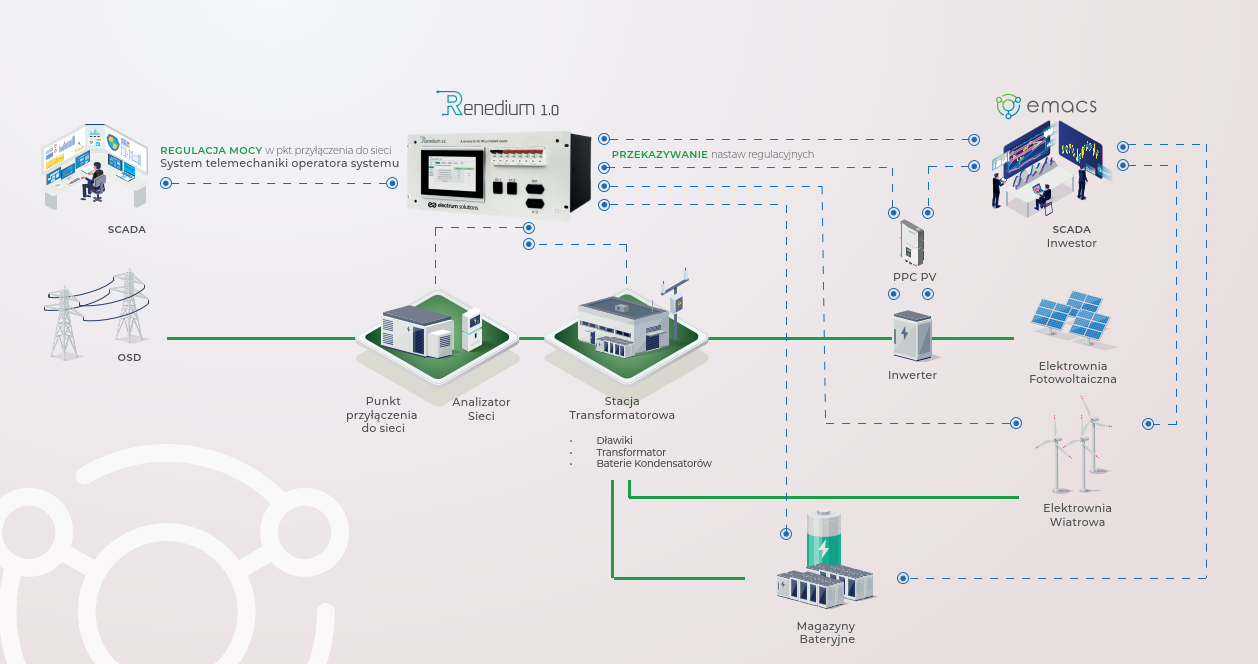 What is a SCADA system made of?
What is a SCADA system made of?
The SCADA system (Supervisory Control and Data Acquisition) is a supervisory and data acquisition system that enables remote control and monitoring of devices and technological processes. It consists of three main components:
- Master station,
- Remote stations,
- and communication infrastructure.
Master Station
The master station is a central computer that collects and processes data from remote stations, issues control commands, and presents information to the operator.
Remote Stations
Remote stations are field devices such as sensors, transducers, meters, controllers, relays, etc., that perform local measurements and control.
Communication
Communication is the data transmission channel between the master station and remote stations, which can be implemented using various technologies such as wired, wireless, radio, satellite networks, etc.
Applications of the SCADA System
The SCADA system is used in many industries and sectors, including energy, water utilities, transportation, telecommunications, and industry. In particular, SCADA is an essential tool for managing wind and solar farms, which are key sources of renewable energy (RES).
Monitoring Photovoltaic Installations and Wind Farms with SCADA
Wind and solar farms consist of many distributed devices such as wind turbines, photovoltaic panels, inverters, transformers, etc., which must be continuously monitored and controlled to ensure their optimal performance, efficiency, and reliability. Comprehensive SCADA solutions enable remote access to data and operating parameters of RES devices, such as:
- power,
- voltage,
- current,
- temperature,
- wind speed,
- solar irradiance, etc.,
- as well as fault, error, and anomaly detection and diagnostics.
The SCADA system also allows for optimization of energy production and consumption, resource and cost management, forecasting and planning, and integration with other systems such as energy management systems, information systems, alarm systems, etc.
Read also:
Wind Farm Management and Operation
Monitoring of Photovoltaic Farms
Benefits of the SCADA System
Managing RES devices using SCADA has a significant impact on the profitability of investments in wind and solar farms. Monitoring RES devices helps extend their lifespan, improve the quality and reliability of energy supply, reduce operating and maintenance costs, and increase personnel and environmental safety. Moreover, comprehensive SCADA solutions allow adaptation to changing market and regulatory conditions such as energy prices, tariffs, taxes, subsidies, emission standards, etc., and enable the generation of additional revenue opportunities, such as system services, energy trading, green certificates, etc.
What is the EMACS System?
The EMACS system combines the advantages of a traditional SCADA system with business analysis components. EMACS integrates classic SCADA features with advanced business intelligence functionalities, such as production and energy consumption optimization, forecasting and planning, integration with other systems, etc. It is the first and only multifunctional platform of its kind on the Polish market. It was created mainly with the energy sector, industry, and life science solutions in mind. EMACS is a proprietary solution developed by Electrum Solutions, a company specializing in innovative and technologically advanced services for the RES sector.
Comprehensive SCADA Solutions in Farm Monitoring – Summary
To sum up, SCADA systems offer a comprehensive solution for monitoring solar and wind farms, which are important sources of renewable energy. The SCADA system ensures efficient and flexible management of RES devices. This translates into increased profitability of investments in wind and solar farms.
Also read: SCADA systems in energy source management




